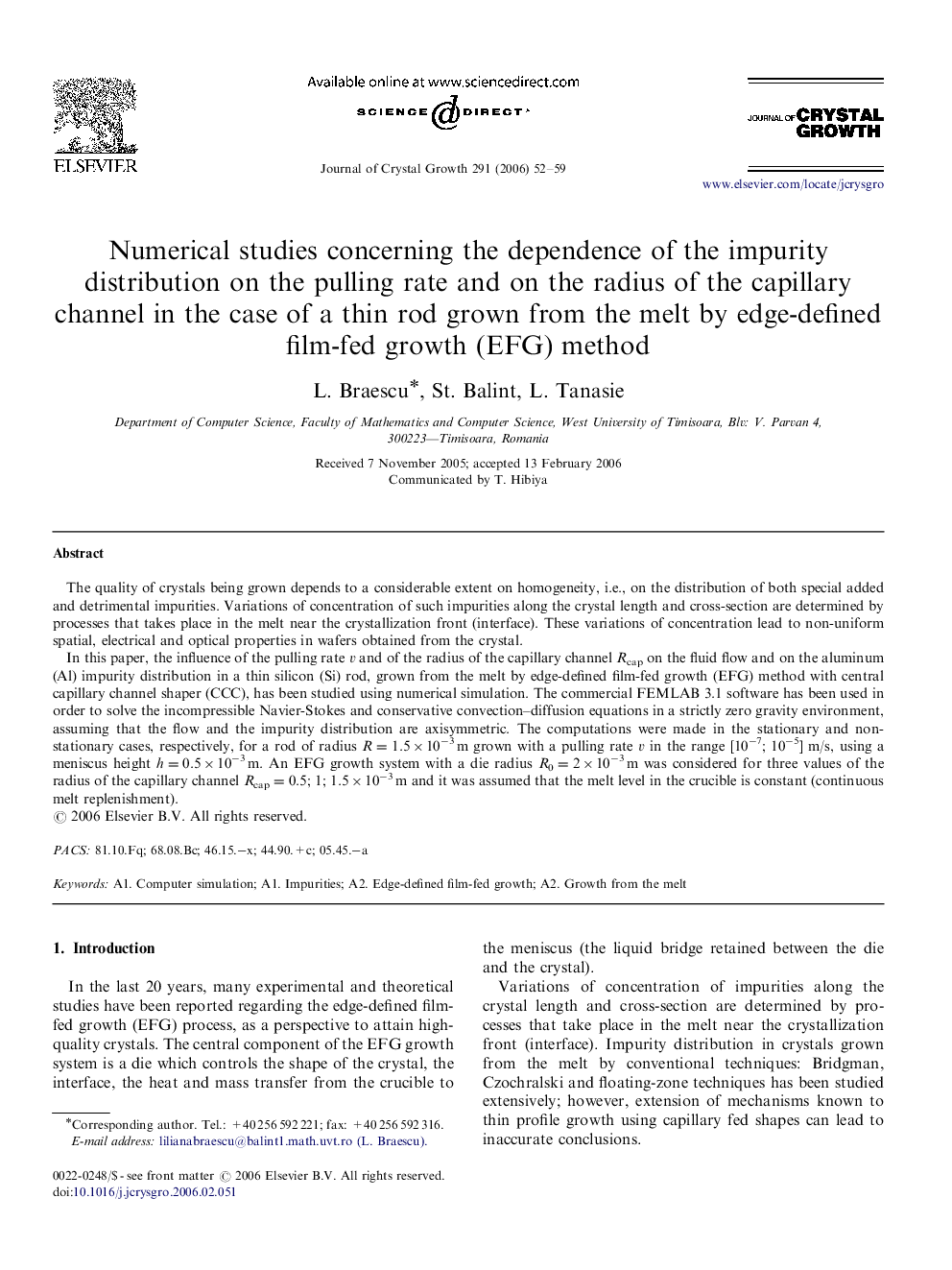| Article ID | Journal | Published Year | Pages | File Type |
|---|---|---|---|---|
| 1796053 | Journal of Crystal Growth | 2006 | 8 Pages |
The quality of crystals being grown depends to a considerable extent on homogeneity, i.e., on the distribution of both special added and detrimental impurities. Variations of concentration of such impurities along the crystal length and cross-section are determined by processes that takes place in the melt near the crystallization front (interface). These variations of concentration lead to non-uniform spatial, electrical and optical properties in wafers obtained from the crystal.In this paper, the influence of the pulling rate v and of the radius of the capillary channel Rcap on the fluid flow and on the aluminum (Al) impurity distribution in a thin silicon (Si) rod, grown from the melt by edge-defined film-fed growth (EFG) method with central capillary channel shaper (CCC), has been studied using numerical simulation. The commercial FEMLAB 3.1 software has been used in order to solve the incompressible Navier-Stokes and conservative convection–diffusion equations in a strictly zero gravity environment, assuming that the flow and the impurity distribution are axisymmetric. The computations were made in the stationary and non-stationary cases, respectively, for a rod of radius R=1.5×10−3 m grown with a pulling rate v in the range [10−7; 10−5] m/s, using a meniscus height h=0.5×10−3 m. An EFG growth system with a die radius R0=2×10−3 m was considered for three values of the radius of the capillary channel Rcap=0.5; 1; 1.5×10−3 m and it was assumed that the melt level in the crucible is constant (continuous melt replenishment).
